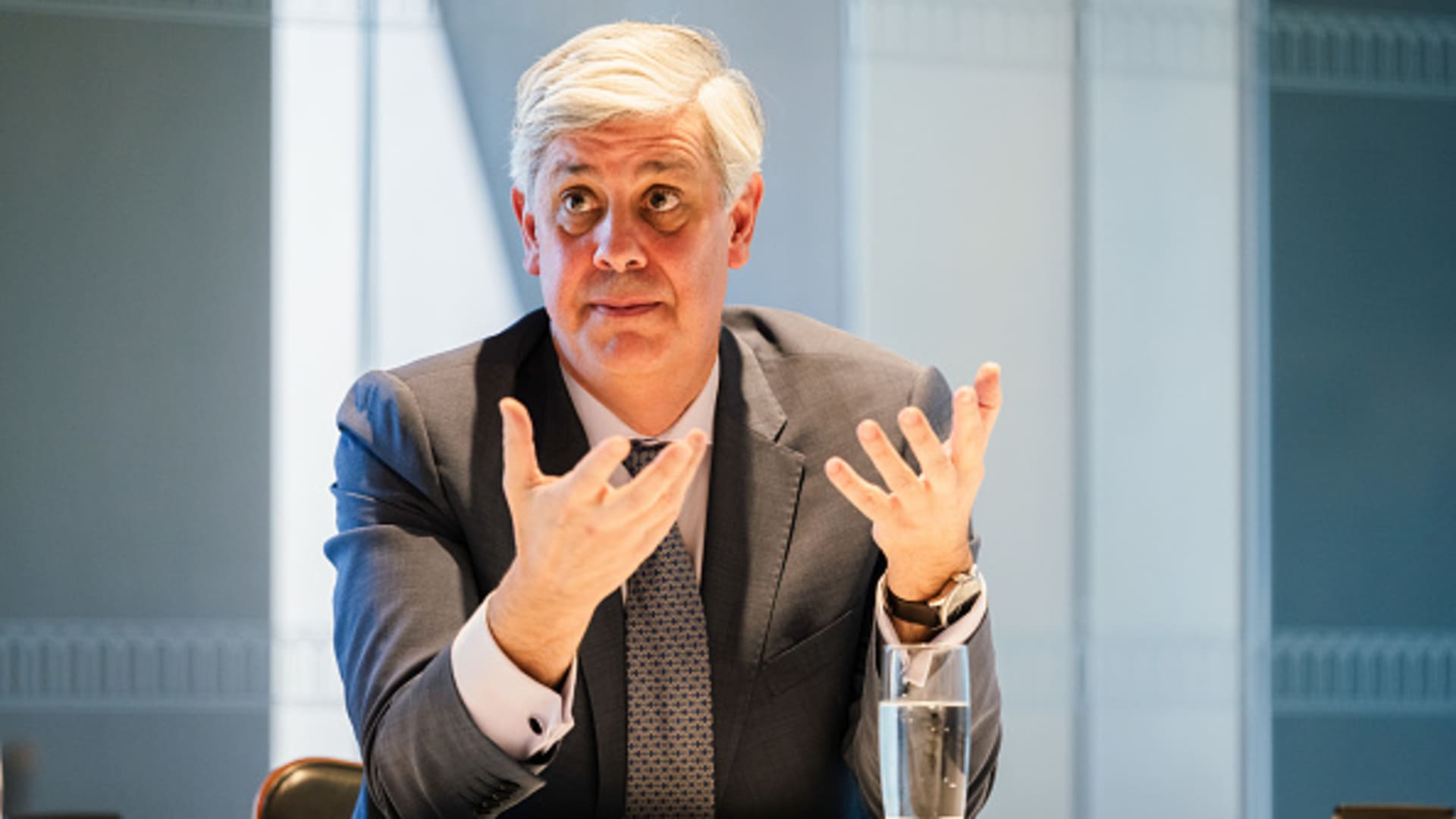Europe’s struggling economy has economists worried — and senior European Central Bank policymaker Mário Centeno, echoes that view.
“I am very concerned about the European economy,” Centeno, who is also governor of the Bank of Portugal, told CNBC’s “Squawk Box Europe” on Friday.
On Thursday, the ECB revised its gross domestic product expectations for the euro area to 0.9% growth in 2025, down from a previously projected 1.1% expansion. The euro area’s seasonally adjusted GDP most recently eked out a 0.1% increase in the fourth quarter.
Centeno linked the downward growth outlook revision to reduced exports and investments, echoing the ECB statement.
“Special investment is, I think, quite subdued in Europe. It will take four years for us to go back to the 2023 level of investment in the private sector, six years in terms of housing investment [and we will be] going back to 2022 levels only in 2028,” he explained.
“These are numbers that raise some questions about the recovery in Europe,” Centeno added.
Concerns about Europe’s sluggish economy have accelerated in recent months, following repeated threats of tariffs from the U.S. administration. U.S. President Donald Trump has already introduced duties on imports from several key U.S. trading partners and has indicated that Europe could be the next target.
But there is frequent policy movement in the U.S.’ position, with pauses, delays and exemptions aplenty as negotiations and pledges of reciprocal measures from the targeted countries continue.
“Tariffs are a tax. They are a tax on both consumption and production, and we do know that taxes have a very clear impact on the economy,” Centeno said Friday, warning that ultimately no one would gain from a tariff war.
One bright spot ahead for Europe could be a potential defense spending push from the European Union, which was introduced earlier this week off the back of souring relations between the U.S. and Ukraine.
If such packages are “well designed,” they could have a positive impact on Europe’s economy, Centeno said.
Germany also this week announced plans to boost infrastructure and defense spending, although the proposal must first pass some hurdles before it can be implemented.
Further rate cuts ahead?
Centeno also addressed the outlook for ECB interest rates, signaling further trims were expected ahead.
“We do think that the journey is very clear, although these rate cuts [were] implemented because the European economy is stagnated, we do have in our baseline a projection of inflation going to 2% in the medium term, but that that includes further adjustment in the rates,” he said.
However, the central bank needed to remain “open” and follow a data dependent, meeting-by-meeting approach, especially due to the current uncertainty regarding economic policies, Centeno said.
The ECB on Thursday announced its sixth interest rate cut since June last year, taking its key rate, the deposit facility rate, another quarter point lower to 2.5%. The move had been widely expected by markets.
In a statement announcing the decision, the ECB also tweaked the language it used to characterize monetary policy to say it was now “meaningfully less restrictive,” a change from the previous description of “restrictive.”
Interpretations of what this could imply for the rate path ahead diverged, with some analysts and economists saying it suggested that policymakers were becoming more cautious about cutting rates. Others said the central bank’s statement indicated more cuts ahead, but that a pause in the cutting cycle could now be on the horizon.
Markets were last pricing in an around 57% chance of the ECB holding rates steady during its April monetary policy meeting and a 43% probability of a further quarter-point reduction.
Beyond the ECB’s statement, markets are likely to also be taking into account developments around tariffs and European defense spending in their assessment of what could come next from the ECB.
“The decision in April will take on board all the information we will get until then,” the central bank’s Centeno commented.

 Economics1 week ago
Economics1 week ago
 Economics6 days ago
Economics6 days ago
 Personal Finance6 days ago
Personal Finance6 days ago
 Accounting6 days ago
Accounting6 days ago
 Personal Finance1 week ago
Personal Finance1 week ago
 Economics7 days ago
Economics7 days ago
 Finance6 days ago
Finance6 days ago
 Personal Finance6 days ago
Personal Finance6 days ago























